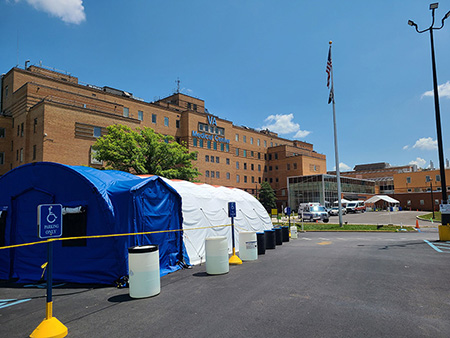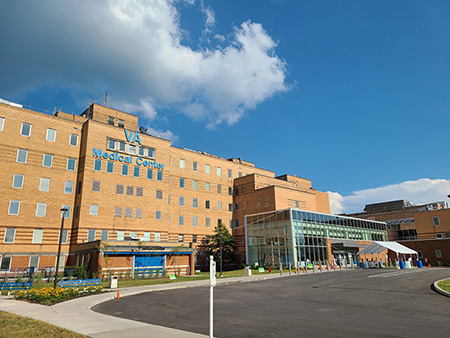The novel coronavirus pandemic has been affecting thousands of people worldwide and has triggered a phenomenon that many have called the “new normal,” a dynamic that requires institutions, governments and societies to rethink their actions and put in place a series of new habits to deal with the routine. The microscopic threat of COVID-19 has been dictating new standards and protocols in many different areas, and health and sleep services are no different.
As much as this segment is traditionally guided by strict precautionary control and hygiene measures, the pandemic has further expanded the care and protective actions in order to mitigate the contagion. Neurovirtual News spoke with representatives of two institutions, one from the United States and another from Brazil, to understand the new measures that are being adopted post-pandemic in relation to sleep services.
After all, as much as the world focus is aimed on combating COVID-19 and developing a vaccine, all other diseases continue to impact people’s lives and cannot, and should not, be overlooked, due to the risk of aggravation.
Resumption of care
The uncertainties during the initial phase of the pandemic and the growth of infection and deaths by COVID-19, with a probable collapse of the health system, forced both the Louis A. Johnson VA Medical Center in Clarksburg, West Virginia (USA) and the Neurológika, Neurology and Neurosurgery Center of Moinhos de Vento Hospital in Porto Alegre (Brazil) to completely interrupt sleep services.
For two months, both institutions stopped performing a large volume of scheduled exams, given their elective nature. Only the most serious cases were referred to other hospital settings. According to Dr. Geraldo Rizzo, neurologist, neurophysiologist, and specialist in Sleep Medicine at Neurológika, “The resumption of patient care took place in early June following a series of measures and controls .”
In the USA, the resumption took place in phases, prioritizing the most critical patients in the first stage. They started with telemedicine consultations, sending equipment for testing to patient’s homes. “We explained the setup over the phone, and after the exams, when we got the devices back, we quarantined everything for 72 hours before starting to download the results,” explains Bradley Weaver, RPSGT and Louis A. Johnson VA Medical Center manager.
In the second phase, care started to include 25% of patients scheduled before the pandemic, including home visits in some cases. “There is still a long list of backlogs that we are working on,” says Weaver.
New security measures
Both the Louis A. Johnson VA Medical Center and Neurológika have adopted a series of protective measures that include not only social distancing, but also the mandatory use of PPE (personal protective equipment ) for all employees – surgical mask and gloves – and for patients, who need to wear facial coverings.
Additional security measures took place as the institutions adjusted the configuration of common areas, with the temporary closure of living areas; suspension of collective drinking fountains; indication of the recommended social distancing with adhesives on the floor; and reducing the number of seats in the areas. “We recommend that patients only come with a companion when it is extremely necessary and to arrive on time to avoid crowding in the waiting room,” explains Dr. Rizzo.
The Louis A. Johnson VA Medical Center has instituted an extensive routine of testing and screening patients before any contact with people or equipment, measures that are generating confidence for patients to return to exams. According to Weaver, “These testing protocols bring us a degree of comfort, but they do not guarantee 100% safety. However, I believe that by maintaining all preventive measures, we will be comfortable with what we are doing.”
In addition, part of the team continues to work remotely, and in cases of travel to other states the employees undergo very strict monitoring, sometimes with quarantine recommendation, before resuming activities at the hospital.
At Neurológika, Dr. Rizzo highlights some precautions: “In the case of electromyography, we use disposable electrodes; in electroencephalography, we always clean the surface electrodes very well, brushing them with soap and water and letting them air dry; and in polysomnography, we follow the protocols recommended by ABMS (Brazilian Association of Sleep Medicine).”
Dynamics for exams
At the Louis A. Johnson VA Medical Center, the first step for patients scheduled for a sleep study is to ensure that they undergo a Covid test. Depending on the profile, the rapid test is applied, with results in a few hours, or the regular test is performed, with results in a few days and the quarantine requirement prior to the sleep study. In the Brazilian clinic the scheduling team presents the details about the patient. “We try to make sure that the sleep test is really necessary at that moment and that the patient does not have respiratory symptoms or has been in contact with someone diagnosed with COVID-19,” explains Dr. Rizzo.
At this stage, the VA hospital has not been conducting CPAP titration studies in patients, though the polysomnography exam is maintained. Patients who tested negative take the exam wearing an N95 mask, while those who tested positive use a self- contained mask, which has the function of providing oxygen to the user. “In this case, the time in bed is minimized, as well as the technical interventions performed during the registration of the polysomnography, in order to minimize the risks of contagion by the technical team,” details Weaver.
As for Neurológika, the option was also for not performing CPAP titration during the pandemic period. “The risks are related to the potential increase in the aerosolization of particles with CPAP, which means that the cleaning of the equipment needs to be carried out very carefully and in an almost obsessive way,” points out Dr. Rizzo.
Future of sleep
The expectation for the future is that technologies continue to evolve to provide better diagnosis. If it were not for technology, much of what was done during the pandemic for online consultation and care for patients with other illnesses would not have been possible.
Specifically, in relation to sleep medicine, the prospects are promising. Just as many work functions that were assigned to the home office during social isolation are expected to follow this dynamic, sleep tests should also follow this trend.
“HST (home sleep testing) certainly gained a lot of momentum due to the pandemic and tends to grow, especially with regard to the diagnosis of respiratory sleep disorders,” points out Dr. Rizzo. However, he adds the caveat: “Type I Polysomnography will still be irreplaceable for the assessment of many other sleep disorders.” Weaver agrees: “I believe that home studies will grow and that we will reach more patients. And when the exam at home is inconclusive, then we will bring the case to the laboratory.”
For now, the recommendation is optimism and vigilance. The pandemic will pass, the search for exams will be resumed, and the tendency is for the “new normal” to evolve and, in due time, bring back only the “normal.”
Louis A. Johnson VA Medical Center
The Louis A. Johnson VA Medical Center is located in the city of Clarksburg, West Virginia. The hospital facility was inaugurated on December 7, 1950 and in 1989 began clinical care. Since 1960, it has been operating as a teaching facility, with active participation in academic residences. The institution was named after Louis A. Johnson, Secretary of Defense for President Harry Truman. The acronym VA stands for Veterans Affairs, referring to the Veterans Health Administration system, originated in the 19th century during the North American Civil War.
Neurológika
Initially called Instituto de Neurofisiologia Clínica, Neurológika was founded in 1984, as an outsourced service of Hospital Moinhos de Vento in Porto Alegre. At that time, the institution performed electroencephalography, electroneuromyography, and evoked potentials. With the evolution of the area of clinical neurophysiology it be gan to perform polysomnography, neonatal polygraphy, and intraoperative monitoring. In addition to serving outpatients it also serves those admitted to the hospital and performs examinations at home or in hospitals that do not have the necessary technology.





